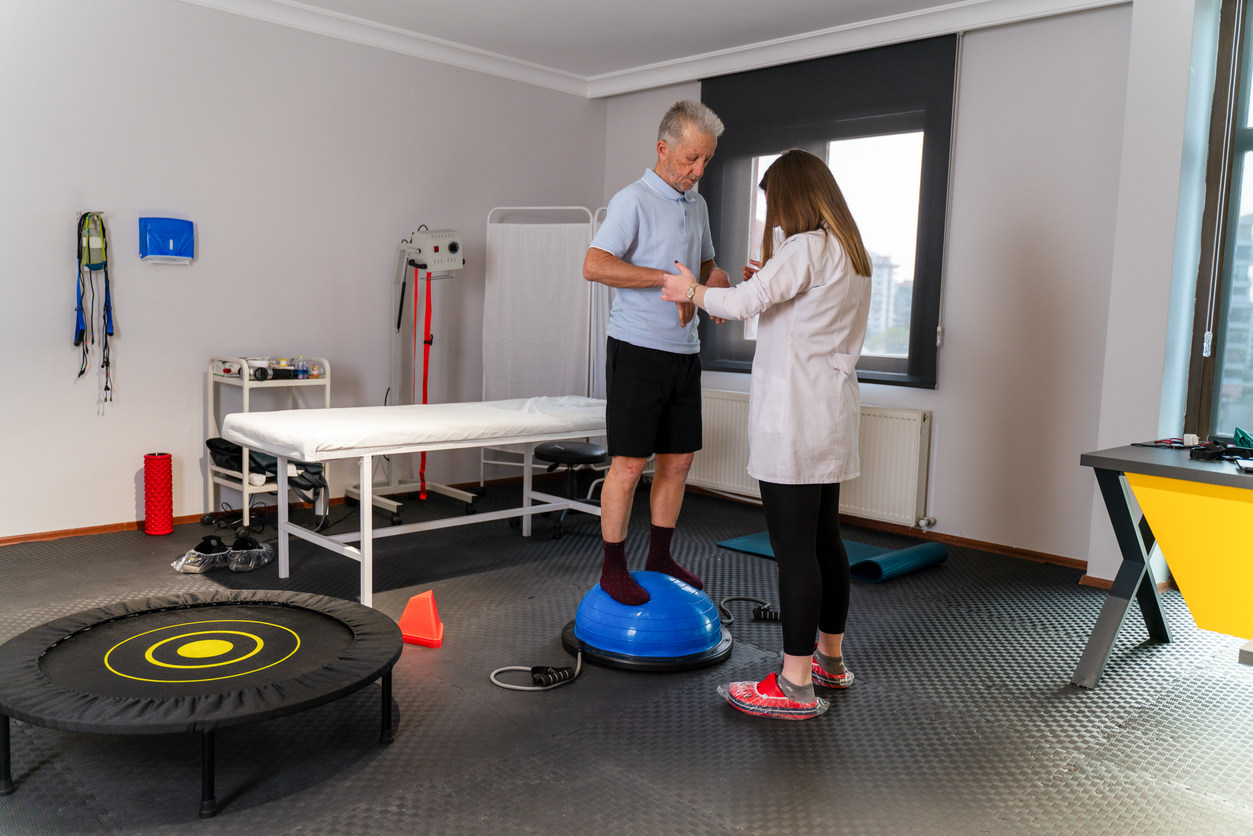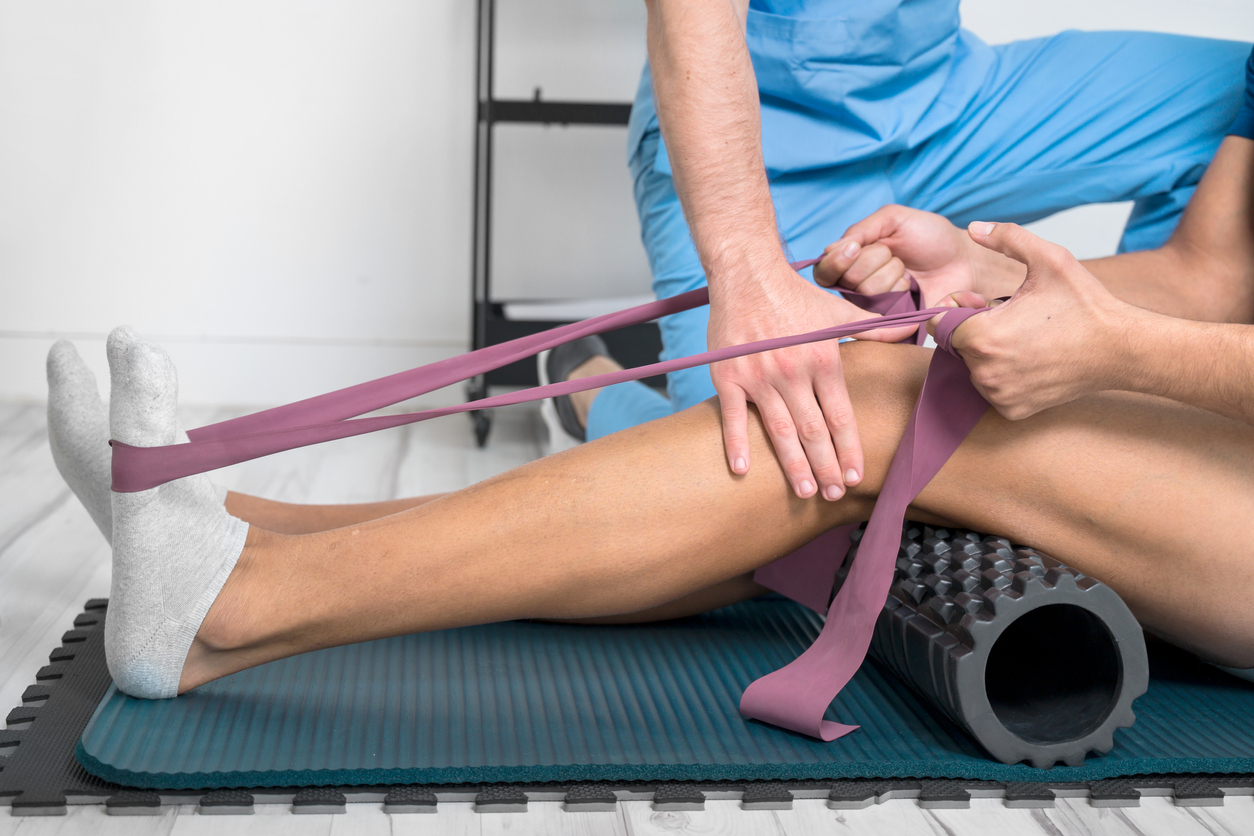Treatments
What Types of Treatments Can Physical Therapy Offer?

What is physical therapy?
Physical therapy is often used as a standard treatment for chronic pain or pain related to an injury. However, it can also help treat other medical conditions, including back pain, headaches, diabetes, injuries, etc. A physical therapist typically treats areas of weakness by encouraging movement.
Physical therapy treatment types
Physical therapy treatment plans vary individually. There are several types of treatments that physical therapists can offer based on an individual’s needs and health condition. These treatments include, but are not limited to, the following:
- Stretches and physical activities — Specifically selected exercises and stretches can help individuals increase strength and flexibility, improve balance and function, and reduce pain or other symptoms. Physical therapists can also provide instructions for exercises and stretches that can be completed at home.
- Joint mobilization — This treatment involves the physical therapist moving a joint in a specific direction in order to improve range of motion and reduce pain. The physical therapist can also give instructions for self-mobilization techniques for home use.
- Massage — Massage therapy can be useful in reducing muscle spasms, improving circulation, and reducing swelling. The therapist manipulates soft tissues, including muscles, tendons and ligaments, with varying degrees of pressure and movement to increase mobility and relieve pain.
- Temperature therapy — Temperature therapy involves the use of heat or cold to reduce pain. Heat therapy relaxes stiff joints and muscles; whereas, cold therapy numbs acute pain and reduces inflammation. A physical therapist can advise whether heat or cold is best for a particular injury or condition. Switching between heat and cold therapy can help reduce certain types of pain.
- Ultrasound — Therapeutic ultrasound, or ultrasound therapy, is a non-invasive, medication-free procedure that has been used to treat various chronic pain conditions. A physical therapist applies deep heat to a specific area using an ultrasound machine. It penetrates deep into the tissues, warming them, to encourage the healing process. Thermal therapeutic ultrasound is primarily used for pain caused by sprains and strains.
- Traction — Physical therapists use traction in the treatment of neck and back pain. It involves the use of a vest or harness along with a device that provides light resistance. Traction devices create space between the joints and discs of the spine, decreasing pressure on nerves that may be responsible for pain.
- Electrical stimulation — Neuromuscular electrical stimulation (NMES) involves electrodes being placed on the skin and connected to a device that produces an electrical current. Certain types of electrical stimulation can be used to contract muscles and prevent them from shrinking due to disuse. Lower levels of electrical stimulation, known as transcutaneous electrical neuromuscular stimulation (TENS), may be used to reduce pain in injured areas. Electrical pulses flood the nervous system, reducing its ability to transmit pain signals from the spinal cord to the brain.
- Dry needling — Dry needling is a treatment in which fine needles are inserted into the skin in order to help relieve pain. The needles do not inject any type of fluid into the body, which is why the treatment is called “dry.” The needles are typically inserted into knotted, painful areas of muscles known as trigger points. Dry needling stimulates tissue in order to release knots and stop spasms. It may also improve flexibility and increase range of motion.
- Whirlpool — A whirlpool is a form of hydrotherapy that involves either hot or cold water. Water is agitated around the body to increase circulation and reduce inflammation. Gentle exercises can be completed while in the whirlpool in order to improve range of motion. Whirlpool therapy also helps keep wounds clean.
- Laser or light therapy — During laser or light therapy, the physical therapist uses a wand that emits different wavelengths of light to an area of the body in order to promote tissue repair and reduce pain. This light decreases nerve sensitivity and improves cellular processes in order to promote healing.
Treatment plans may vary at different locations according to the available equipment and specialized training of physical therapists. Individuals who are interested in specific treatments should ask about the availability of those treatments prior to making an appointment.
Additional sources: Merck Manual and VeryWell Health


















